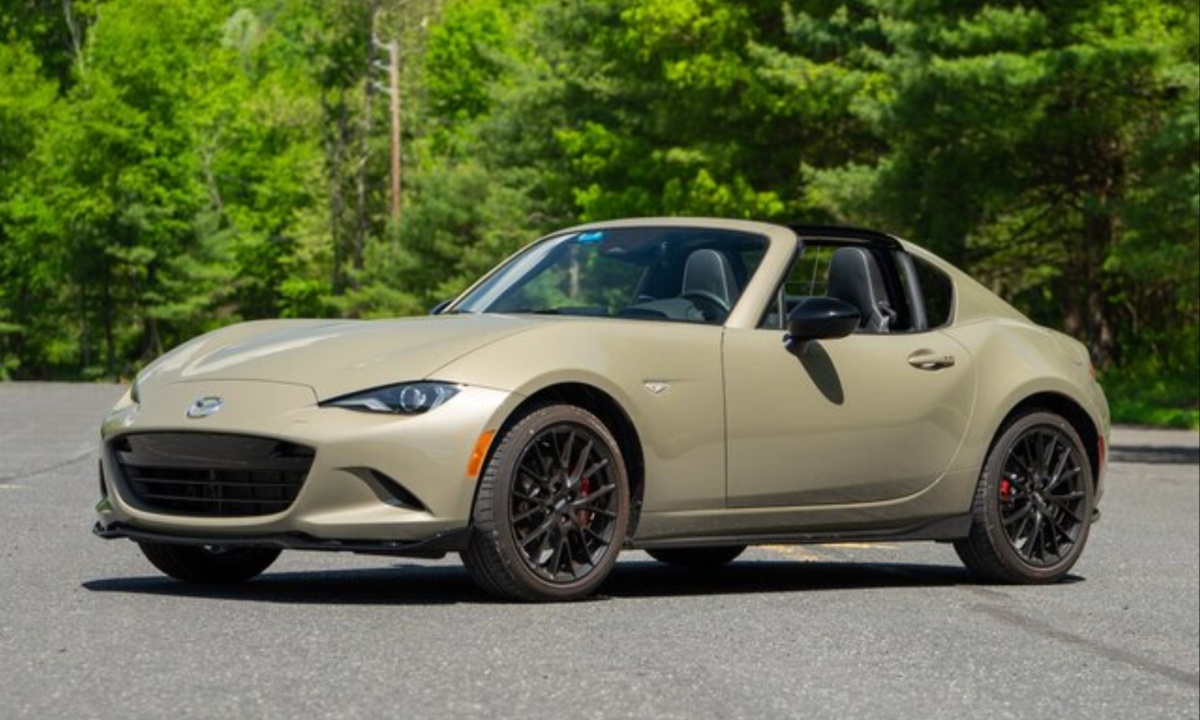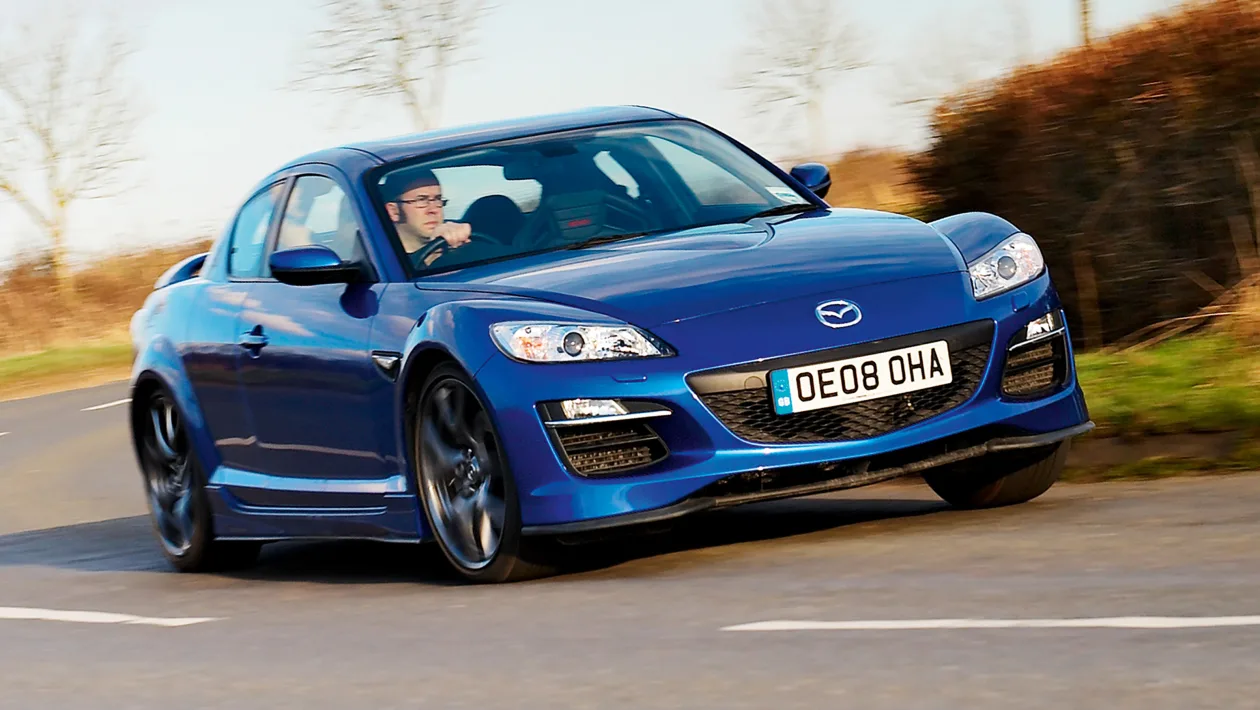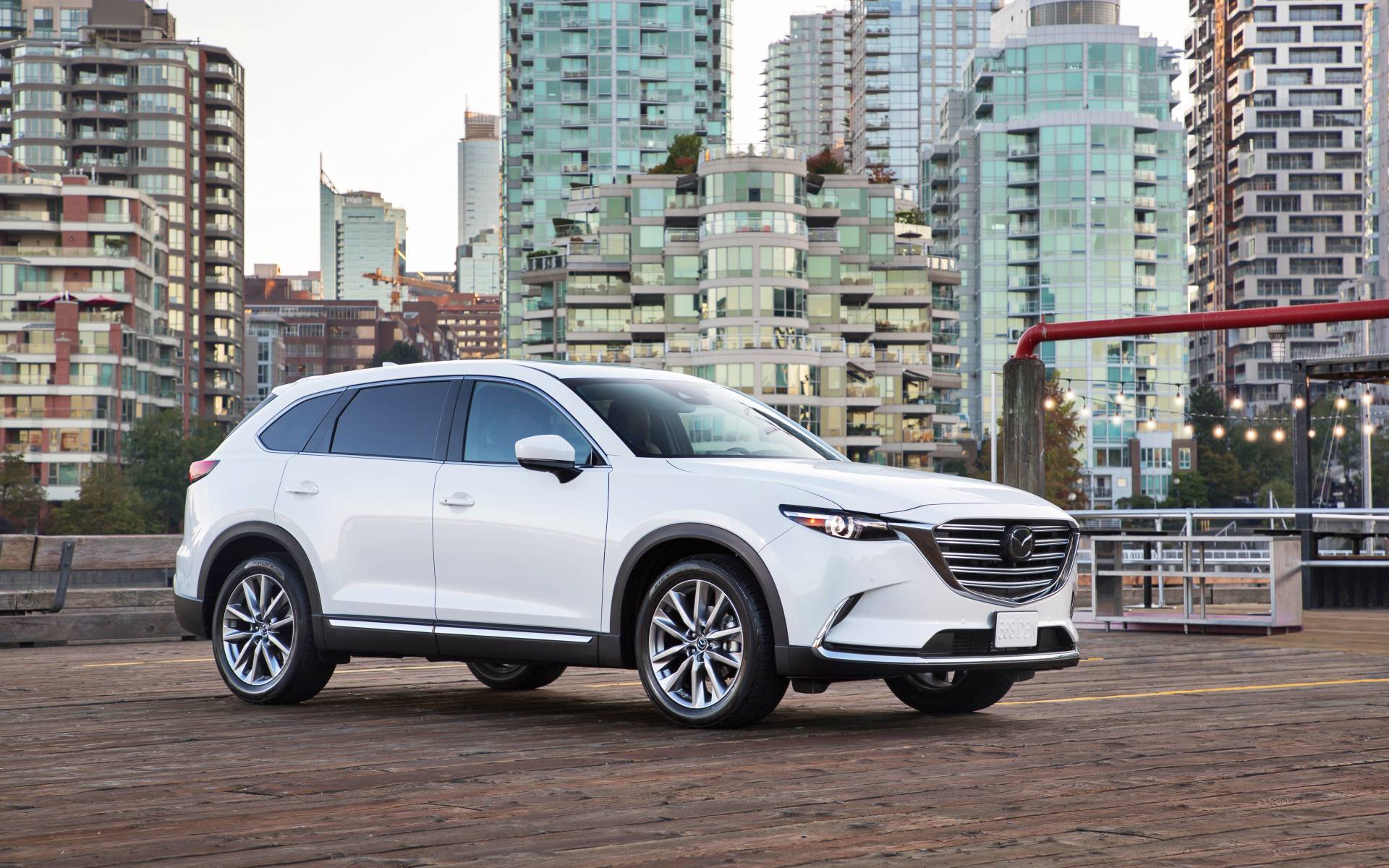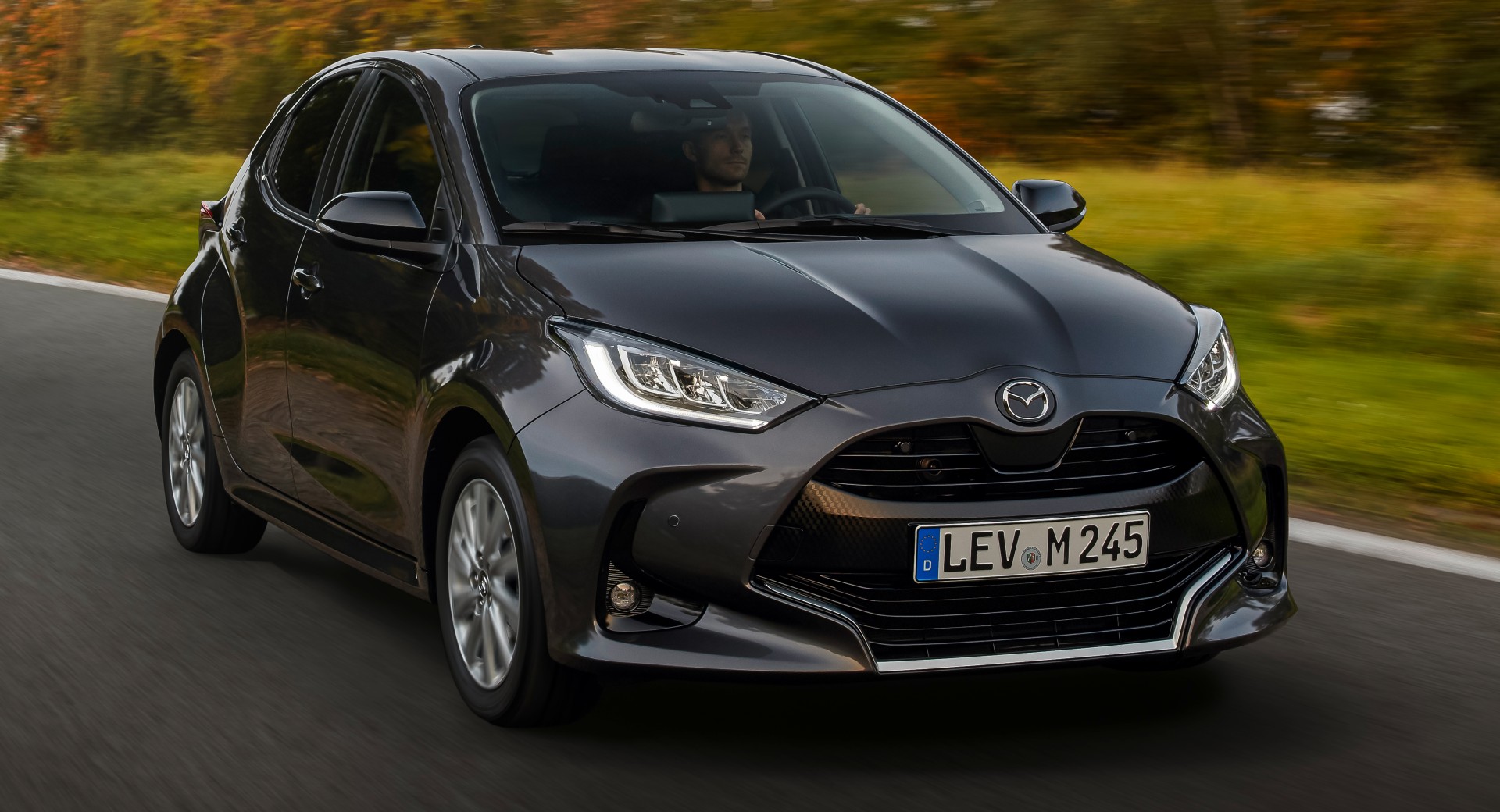Mazda has long been celebrated for its dedication to creating vehicles that emphasize driving pleasure, a philosophy famously encapsulated in its “Zoom-Zoom” tagline.
At the heart of this philosophy lies the company’s commitment to delivering an engaging and connected driving experience, where the driver feels fully in tune with the car and the road beneath it.
One of the most critical aspects of this connection is steering feel — the tactile feedback and mechanical communication a driver receives through the steering wheel.
Steering feel is much more than just how heavy or light a steering wheel feels; it’s a complex blend of precision, feedback, weight, and responsiveness that together create the sensation of control, confidence, and engagement.
A car with excellent steering feel makes the driver feel like an active participant, interpreting every nuance of the road and responding faithfully to inputs. Conversely, poor steering feel can make a vehicle feel detached, floaty, or numb, creating a barrier between driver and machine that can lead to frustration or a lack of confidence.
Mazda’s reputation for driver engagement is well-earned, but like many automakers, the brand’s lineup contains a range of steering experiences depending on the vehicle’s purpose, size, and market positioning.
Sports cars like the Mazda MX-5 Miata and the rotary-powered RX-8 are well-known for their exceptional steering feel — sharp, precise, and loaded with mechanical feedback.
These models embody Mazda’s dedication to creating a pure, visceral connection that thrills driving enthusiasts. On the other hand, some of Mazda’s larger vehicles and family-oriented models, such as SUVs and minivans, often sacrifice steering sharpness and feedback in favor of comfort, ease of use, and safety.
In these vehicles, the steering can feel overly assisted, vague, or disconnected, reflecting compromises required to meet customer expectations for convenience and usability in urban or highway environments.
Understanding which Mazda models offer truly engaging steering and which ones deliver a more floaty, detached feel is essential for buyers who prioritize driving dynamics and road feel. This distinction also highlights the challenges automakers face when balancing driver engagement with the practical demands of different vehicle segments.
The contrast between Mazda’s sports cars and family-oriented vehicles underscores how steering systems are tuned and engineered differently to meet varied goals — from sharp cornering and spirited driving to effortless maneuvering and comfortable cruising.
In this article, we will explore five Mazda models renowned for their real, connected steering feel, celebrated by enthusiasts for their precision and responsiveness. We will contrast these with five Mazda models that exhibit a floaty or detached steering experience, where the connection between driver and road is less direct.
Through this comparative examination, readers will gain insight into how Mazda’s engineering philosophy manifests differently across its lineup and how the steering feel plays a pivotal role in shaping the driving experience.
Whether you are a die-hard Mazda fan or a casual driver looking to understand more about vehicle dynamics, this guide will offer valuable perspectives on the nuances of steering feel within Mazda’s diverse family of vehicles.
Also Read: 5 Rear Differentials That Need Zero Service And 5 That Eat Fluid Quickly
Five Mazdas with Real Steering Feel

1. Mazda MX-5 Miata (NA/NB Generations)
The Mazda MX-5 Miata NA and NB generations represent the quintessential expression of driver-focused engineering, especially when it comes to steering feel. The original NA Miata’s steering system was purely mechanical, employing a manual rack-and-pinion setup that delivered a raw, unfiltered connection between driver and road.
Without power assistance, every movement of the wheel was transmitted directly to the front tires, offering tactile feedback that made the smallest bumps, road imperfections, and tire grip levels instantly perceptible.
This immediacy allowed the driver to predict how the car would respond in a corner, creating a bond that few sports cars of that era matched. The light steering effort also made navigating tight corners feel effortless while still maintaining a sense of mechanical honesty that purists crave.
When pushed hard, the NA Miata’s steering provides subtle but vital information about the tires’ limits, helping drivers balance on the edge of traction without oversteering unexpectedly. This combination of lightness, precision, and feedback has cemented the NA Miata’s reputation as one of the most engaging small sports cars ever made.
The NB generation Miata, introduced in the late 1990s, brought power steering into the fold but carefully tuned it to maintain much of the NA’s communicative feel.
This was no easy feat — many automakers sacrifice feedback when adding power assistance to reduce driver effort. However, Mazda engineered the NB’s hydraulic power steering system to preserve the core qualities that made the NA so beloved.
The NB’s steering offered more weight and refinement, giving it a slightly more planted feel at higher speeds without compromising agility in tight corners. Turn-in was sharp and confident, and mid-corner corrections felt intuitive, allowing the driver to modulate the car’s balance with precision.
The NB also improved on steering feel consistency across different speeds, making it a more versatile sports car for everyday driving without losing its track-day appeal.
Enthusiasts praise the NB Miata for maintaining that delicate balance between modern convenience and analog purity, ensuring the car feels alive and connected even by today’s standards.
Another aspect worth highlighting is the Miata’s minimalist design ethos, which complements its steering feel. Without excessive driver aids, heavy sound deadening, or complicated suspension components, the Miata’s feedback loop remains clear and undiluted.
The steering wheel acts almost as an extension of the driver’s hands, communicating not just direction but also the nuances of grip and road texture.
This makes the Miata not just a car you drive, but one you feel — a critical distinction in the world of sports cars. The raw engagement provided by the steering has made the Miata a benchmark against which many other sports cars are measured.
Whether carving through mountain roads or navigating city streets, the NA and NB Miatas offer a steering experience that’s immediate, honest, and deeply satisfying, reaffirming Mazda’s philosophy that driving pleasure lies in the connection between man and machine.

2. Mazda RX-8
The Mazda RX-8 is a rare beast in the world of Japanese sports cars, marrying the unique rotary engine with a chassis and steering system designed for enthusiast drivers who demand sharp, precise handling.
One of the RX-8’s most lauded characteristics is its hydraulic power steering, which remains one of the last of its kind in an era when many manufacturers have transitioned to electric power steering systems.
Hydraulic setups, when properly tuned, have the advantage of delivering richer, more nuanced feedback through the steering column, and Mazda capitalized on this by engineering the RX-8’s steering to be exceptionally communicative. The steering effort is balanced perfectly: heavy enough to feel substantial and connected, yet light enough to prevent fatigue during spirited driving.
This provides the driver with a constant stream of information about what the front tires are doing, from subtle grip thresholds to changes in road texture.
What sets the RX-8 apart even more is its near-perfect 50:50 weight distribution and rear-wheel-drive layout, which work in harmony with the steering system. This balance allows for incredibly precise turn-in response, with the car reacting instantly and predictably to steering inputs.
The chassis feels alive and eager, and the steering feedback helps the driver sense when the limits of adhesion are near without being abrupt or unsettling.
This communicative quality instills confidence, encouraging drivers to push the car harder and explore the limits of its handling capabilities. Unlike many sports cars that feel artificial or numb due to electronic steering calibration, the RX-8 remains a driver’s car in the truest sense.
The steering wheel becomes a vital link in the feedback loop that connects the driver to the car’s dynamic behavior, making every corner an engaging, tactile experience.
Moreover, the RX-8’s steering system benefits from its unique design choices, such as the use of aluminum-intensive construction and a highly rigid chassis. These factors reduce flex and unwanted vibrations, ensuring that the feedback reaching the driver’s hands is clean and accurate.
This precise mechanical feel contrasts sharply with the disconnected, floaty steering found in many other sports cars of its time. Despite some compromises made to meet emissions and comfort standards, the RX-8 remains one of Mazda’s most memorable models precisely because of how its steering makes the car feel alive and responsive.
For those seeking a sports car that delivers a pure, engaging driving experience without distractions, the RX-8 remains a standout in Mazda’s lineup and a classic example of exceptional steering engineering.

3. Mazda3 (First Generation, BK 2004–2009)
When Mazda launched the first-generation Mazda3 in the mid-2000s, it shook up the compact car segment with its combination of sharp styling, competent performance, and surprisingly engaging driving dynamics. Central to this engagement was the BK Mazda3’s steering system.
Unlike many of its rivals that featured numb, overly assisted steering setups, the Mazda3 offered hydraulic power steering that struck a rare balance between lightness and feedback.
This system allowed drivers to feel connected to the road without requiring excessive effort behind the wheel. The feedback communicated through the steering wheel wasn’t as raw as the Miata’s, but it was precise enough to allow for confident, spirited driving.
One of the most impressive aspects of the BK Mazda3’s steering was its responsiveness. The car responded quickly and accurately to driver inputs, with minimal play or vagueness in the steering wheel’s center position. This made lane changes, cornering, and tight maneuvers feel confident and controlled.
Even during abrupt directional changes or at highway speeds, the steering maintained a composed, reassuring presence, giving the driver a sense of control that was rare in this segment. Mazda’s focus on chassis tuning complemented the steering system perfectly, with well-controlled body roll and responsive suspension geometry enhancing the driving experience.
The BK Mazda3’s steering feel was an important part of Mazda’s larger “Zoom-Zoom” ethos — a philosophy that aimed to inject excitement and driver engagement into every model, regardless of its size or price point.
By delivering a steering experience that was both communicative and effortless, the Mazda3 set itself apart from more pedestrian compact cars that prioritized comfort or economy over connection.
This helped Mazda cultivate a loyal following among drivers who wanted a practical daily driver that still felt alive on the road. The BK Mazda3’s steering system demonstrated that engaging driving dynamics didn’t have to be exclusive to sports cars, and it remains a benchmark for compact cars even today.

4. Mazda6 (Third Generation, GJ 2014–2021)
The third-generation Mazda6 marked a significant evolution in Mazda’s approach to the midsize sedan segment, and nowhere is this more evident than in its steering feel. Mazda invested heavily in refining its electric power steering system, which historically had been criticized for being less communicative than hydraulic setups.
The GJ Mazda6’s steering strikes a remarkable balance between modern convenience and traditional driving engagement, offering a level of feedback and responsiveness that many competitors simply don’t match in this segment.
The steering system in the GJ Mazda6 features a quick ratio and excellent on-center precision, which translates into agile and confident handling.
It feels lively and direct, making the car feel smaller and more nimble than its size suggests. This responsiveness is paired with a sense of weight that grows with speed, instilling confidence on highways and during spirited drives alike.
Unlike many sedans in its class that suffer from vague or overly light steering, the Mazda6 communicates the front tires’ behavior with clarity, giving the driver the tools needed to place the car precisely in a corner or execute smooth lane changes.
What truly distinguishes the third-gen Mazda6’s steering is the level of refinement in how feedback is delivered. The car transmits subtle road textures and tire load changes without becoming intrusive or jittery, maintaining comfort while keeping the driver informed.
This nuanced approach makes the Mazda6 feel like a sports sedan in disguise — capable, engaging, and fun without sacrificing daily usability. The steering feels like a natural extension of the driver’s intentions, reinforcing Mazda’s philosophy of making every model a joy to drive.
The GJ Mazda6 stands as a testament to how modern technology, when thoughtfully engineered, can preserve driving pleasure even in more mainstream vehicles.

5. Mazda CX-5 (First Generation, KE 2013–2016)
In the realm of compact crossovers, driving engagement often takes a backseat to comfort and utility. Yet, Mazda’s first-generation CX-5 challenged this norm by delivering a steering feel that was notably more alive and communicative than most of its rivals.
Mazda carried its “Zoom-Zoom” philosophy into the crossover segment, tuning the CX-5’s electric power steering system to offer an impressive blend of precision, feedback, and ease of use.
Despite the vehicle’s higher ride height and heavier curb weight compared to Mazda’s cars, the CX-5’s steering retained a level of crispness and control that made it enjoyable to drive. The steering effort was light enough for easy city driving and parking, but it did not feel artificial or overly assisted.
There was a natural progression of weight as speed increased, which enhanced driver confidence at highway speeds. More importantly, the CX-5 communicated the front tires’ grip and load changes effectively, allowing drivers to sense the vehicle’s behavior in corners and on uneven pavement.
Mazda’s engineers also paid close attention to chassis tuning, reducing body roll and maintaining composure through bends to complement the steering system. This cohesion between chassis and steering gave the CX-5 a balanced, planted feel that belied its crossover status.
For drivers who needed utility without sacrificing engagement, the CX-5 was a rare find in the segment. It showed that even family-friendly vehicles could deliver rewarding steering feel and dynamic response. The first-generation CX-5’s success helped redefine expectations for crossovers, proving that steering quality need not be compromised for practicality.
Five Mazdas with Floaty or Detached Steering Feel

1. Mazda CX-9 (First Generation, 2007–2015)
The first-generation Mazda CX-9 was positioned as a large, family-friendly SUV that emphasized comfort, space, and refinement over sharp driving dynamics. Unfortunately, one of the biggest compromises in this model was the steering system, which suffered from a notably floaty and disconnected feel.
Unlike Mazda’s smaller cars and sports models that pride themselves on delivering precise steering feedback, the CX-9’s electric power steering was tuned primarily for lightness and ease of maneuverability at low speeds.
While this might be practical for parking and urban driving, it resulted in a steering feel that was vague and somewhat uninspiring when the vehicle was pushed harder or driven on twistier roads.
At highway speeds, the CX-9’s steering felt numb and lacked the reassuring weight that helps build driver confidence. The steering wheel would often return to center sluggishly, and mid-corner corrections were met with a delayed or muted response.
This lack of connection to the road was especially frustrating given the SUV’s relatively competent chassis dynamics and well-controlled body roll. The disconnect between the vehicle’s mechanical capabilities and the steering feel created a sensation of driving a larger, less agile vehicle than the CX-9 truly was.
Rather than inspiring confidence, the steering made the vehicle feel distant and less responsive, which could be a disadvantage in emergencies or more spirited driving scenarios.
It’s worth noting that Mazda prioritized passenger comfort and family usability in the CX-9’s design, which partly explains the steering tuning. The goal was to produce a vehicle that felt easy in everyday situations, like city driving and freeway cruising.
However, this focus led to a loss of the tactile communication that many drivers expect from a Mazda. While this steering feel suits the vehicle’s role as a comfortable, long-distance cruiser, it leaves enthusiasts or those who value engagement feeling somewhat disconnected.
For those seeking the characteristic Mazda driving excitement, the CX-9’s floaty steering is a reminder that not every model can carry the brand’s sports car DNA.

2. Mazda Tribute (2001–2006)
The Mazda Tribute, a compact SUV built largely in partnership with Ford (sharing its platform with the Ford Escape), offers a classic example of a Mazda vehicle with steering that feels uninspired and overly floaty.
This model’s steering system was calibrated with comfort and ease of use in mind, resulting in a steering feel that many drivers found vague and overly light.
The lack of feedback meant the driver had little sense of what the front wheels were doing, particularly when navigating highways or twisting roads where precision matters most.
During highway cruising, the Tribute’s steering often felt disconnected and slow to respond to inputs. This led to a sensation of “floating” over the road, where the driver’s inputs didn’t immediately translate into predictable vehicle behavior. The power steering system’s excessive assistance made the steering wheel feel disconnected from the road surface, reducing driver confidence and engagement.
This was a significant departure from the sharper, more communicative steering found in other Mazdas of the era. Compounding the issue, the front-end suspension design didn’t inspire much confidence either, with some models displaying vague steering feedback when pushed in dynamic driving situations.
From a practical perspective, the Tribute’s steering characteristics might make it easier to manage for some drivers, particularly in urban settings or tight parking situations. However, for those who value responsive handling or spirited driving, the Tribute’s steering feels diluted and less engaging.
This is a common trade-off seen in many early-2000s SUVs, where comfort and ease of use took precedence over steering precision. The Tribute’s floaty steering serves as a reminder that platform sharing and segment compromises can sometimes dilute the core driver-focused identity Mazda is known for.

3. Mazda5 (Second Generation, 2010–2015)
The Mazda5, Mazda’s compact minivan offering, is a vehicle designed with family utility and versatility at the forefront. While it excels at packing in passengers and cargo into a surprisingly nimble footprint, its steering system reflects a compromise typical of the segment — one that prioritizes comfort and low-effort steering over driver engagement.
The result is a steering feel that many drivers describe as light, vague, and floaty, especially at higher speeds where a heavier, more connected feel would enhance driver confidence.
At slower speeds, such as in city traffic or parking lots, the Mazda5’s light steering effort makes it easy to maneuver and control, which is a definite advantage for a family-oriented vehicle. However, once you leave these conditions and start driving on highways or winding roads, the steering’s lack of weight and feedback becomes more apparent.
There’s a sensation of driving behind a buffer or shield, where the driver’s hands don’t receive enough information about what the front tires are encountering. Mid-corner corrections require more cautious inputs, as the steering response is less precise and more delayed than in Mazda’s sportier models.
The floaty steering feel in the Mazda5 can be attributed to the tuning choices Mazda made to appeal to a broad market, where comfort and ease of use trumped sporty handling. Additionally, the suspension geometry and the minivan’s higher center of gravity play roles in dampening the steering feedback.
While the Mazda5 remains a competent and reliable family vehicle, its steering feel is often cited as one of the compromises that separate it from Mazda’s more driver-focused lineup. For buyers prioritizing engagement, the Mazda5’s steering is an area where the vehicle notably falls short.

4. Mazda2 (Second Generation, DE 2007–2014)
The second-generation Mazda2 is a compact hatchback that delivers excellent fuel efficiency and city-friendly size, but its steering system is an area where it doesn’t quite live up to Mazda’s usual standards for driver involvement.
The electric power steering employed in this generation was optimized for energy efficiency and ease of use, resulting in a steering feel that can be described as overly light and disconnected from the road. Unlike more precise, mechanical setups, this system offers minimal feedback to the driver, making it difficult to sense the limits of grip or road texture.
At low speeds, the Mazda2’s steering feels suitably light and effortless, which helps with urban maneuvering and parking. However, as speeds increase or when tackling curves and corners, the steering lacks the weight and sharpness needed to inspire driver confidence.
There is a noticeable dead zone around the center position, meaning that small steering inputs may feel unresponsive or delayed, adding to the sensation of floating. Drivers might find themselves compensating by making exaggerated steering inputs or feeling unsure about the car’s behavior during sudden maneuvers.
This floaty, disconnected steering feel diminishes what could otherwise be a very nimble and fun-to-drive subcompact. While the chassis and suspension are tuned to be agile and responsive, the steering system undermines those qualities by failing to communicate the car’s dynamic state effectively.
For drivers who prioritize feel and connection, the second-gen Mazda2’s steering is a common point of criticism, highlighting that efficiency and ease sometimes come at the cost of driver engagement in smaller Mazdas.

5. Mazda MPV (2000–2006)
The Mazda MPV, a mid-sized minivan designed to compete in the family-hauler segment, is built primarily for comfort, space, and convenience rather than driving excitement. Its steering system reflects this focus, being light and heavily assisted to make maneuvering easier in parking lots and tight residential streets.
While this approach makes sense for the MPV’s target market, it also results in a steering feel that many describe as vague, floaty, and disconnected from the road. This is particularly noticeable at highway speeds, where a heavier, more communicative steering setup would typically provide better driver confidence and control.
The floaty steering feel in the MPV can be attributed to both the power steering system’s high level of assistance and the suspension design, which prioritizes smoothness over sharpness. The result is a front-end that feels soft and less precise, with slow steering response and a lack of feedback about road surface conditions or tire grip.
This can lead to uncertainty during quick lane changes or emergency maneuvers, where immediate, predictable steering input is critical. The MPV’s steering also lacks the progressive feel that helps drivers judge how much input is needed in various driving situations, contributing further to a sensation of detachment.
While the MPV fulfills its role admirably as a family mover, its steering feel is a reminder that Mazda’s more practical, utility-focused models sometimes sacrifice the connected driving experience that enthusiasts associate with the brand.
For many owners, this is a non-issue, but for those used to the sharper, more engaging steering of other Mazdas, the MPV’s floaty steering can feel uninvolving. It’s a clear example of how segment priorities can shape vehicle dynamics, often at the expense of driver engagement.
Also Read: 5 Windshield Washer Systems That Always Work And 5 That Clog Instantly
Steering feel is a fundamental aspect of what makes driving enjoyable, and Mazda’s approach to this element of vehicle dynamics has been a defining characteristic of the brand for decades. As we have seen, the quality of steering feedback and connection can vary significantly across Mazda’s model range, shaped largely by the vehicle’s intended purpose and engineering priorities.
At one end of the spectrum, Mazda’s sports cars and smaller, driver-focused models offer steering experiences that are precise, communicative, and richly engaging. These cars deliver direct feedback that allows drivers to sense the road surface, tire grip, and subtle changes in chassis dynamics, creating a bond that transcends the act of simply driving.
The MX-5 Miata, RX-8, and even some of the earlier Mazda3 and Mazda6 models exemplify how steering can be tuned to enhance driver confidence and pleasure, making these vehicles beloved by enthusiasts worldwide.
On the other hand, Mazda’s larger SUVs, family minivans, and compact crossovers often feature steering systems tuned for comfort, ease of use, and low effort rather than sharpness or feedback. Vehicles like the CX-9, Tribute, and MPV show how steering can feel floaty, vague, or detached — a byproduct of engineering choices aimed at prioritizing convenience, smoothness, and safety for a broad range of drivers.
While these vehicles succeed in their respective roles as comfortable and practical daily drivers, they lack the mechanical immediacy that characterizes Mazda’s most driver-focused offerings. This contrast underscores the reality that steering feel is not a one-size-fits-all attribute but rather a carefully calibrated balance dependent on vehicle purpose and target audience.
The trade-offs between real, connected steering feel and floaty, detached steering also reflect broader trends in automotive design. The move toward electric power steering (EPS) systems, driven by efficiency and emissions regulations, often challenges manufacturers to maintain tactile feedback without sacrificing modern conveniences.
Mazda’s success in some models to preserve hydraulic feel or finely tune EPS systems shows that it’s possible to deliver engaging steering even with advanced technologies, but compromises remain inevitable in some vehicle categories.
Ultimately, the steering feel you want in a Mazda depends on your priorities as a driver. If you seek sharp turn-in, crisp feedback, and a tactile connection that invites spirited driving, models like the MX-5 Miata, RX-8, and earlier Mazda3s and Mazda6s stand out as excellent choices.
Conversely, if you prioritize comfort, ease, and smoothness over sharp feedback, the CX-9, Tribute, Mazda5, and other family-oriented models provide steering tuned to match those goals. Recognizing this distinction can help buyers make informed decisions and appreciate Mazda’s nuanced approach to vehicle dynamics.
In the end, Mazda’s steering feel spectrum — from the real and connected to the floaty and detached — is a reflection of the brand’s versatility and commitment to meeting diverse driver needs. Whether carving winding roads in a Miata or ferrying family members in a CX-9, Mazda vehicles offer steering experiences tailored to the task at hand, showcasing the brand’s dedication to balancing performance, comfort, and usability.
This rich diversity makes Mazda a brand that caters not only to driving enthusiasts but also to practical-minded customers, maintaining the spirit of “Zoom-Zoom” across its entire lineup.

